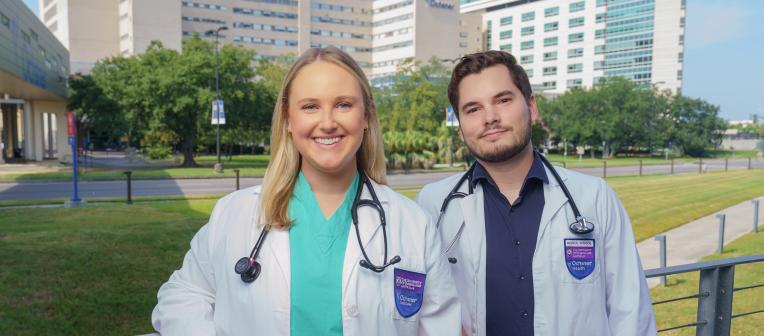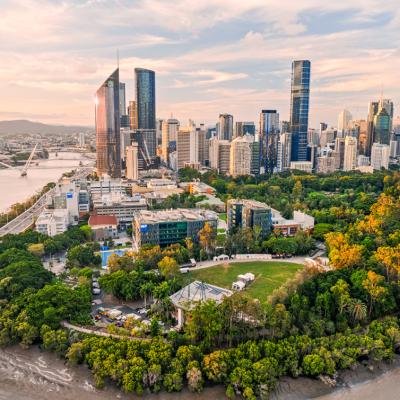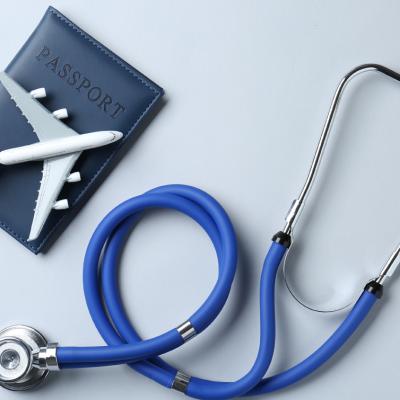Can you become a licensed physician in the United States if you study medicine overseas?
The answer is yes. Hundreds of thousands of doctors have done it, and the US healthcare system relies on them every day.
In fact, nearly 30% of practicing physicians in the US are International Medical Graduates (IMGs), according to the American Medical Association’s 2023 Physician Masterfile. That’s over 300,000 doctors who trained abroad and now care for patients across the country.
If you're thinking about studying medicine and open to a global path, this article will help you understand what an IMG is, what the process involves, and why this route might not just be possible but powerful too.
What is an international medical graduate?
An International Medical Graduate (IMG) is someone who earned their medical degree outside of the United States or Canada, at a school not accredited by a US-based accrediting agency.
You can be a US citizen, a permanent resident, or an international student but what matters is where you study medicine, not your nationality.
Let’s say you complete your MD at a respected overseas university like The University of Queensland in Australia. Even if you’re American, you’re considered an IMG when it comes to US residency and licensure.
Unlike most international medical schools, The University of Queensland-Ochsner Doctor of Medicine (MD) program is designed specifically for US citizens and permanent residents. It’s not a general international med school where Americans happen to enroll, it’s a dedicated US cohort, following a US-style curriculum, with USMLE prep and clinical training at US hospitals and clinics.
Who is considered an international medical graduate?
It’s a broad definition, but here’s how it breaks down:
- A US IMG is a US citizen or permanent resident who studies medicine abroad (eg. in Australia, the Caribbean, Ireland, or the UK).
- A non-US IMG is both born and trained outside the US.
Both groups must meet the same requirements to become eligible for residency training and medical practice in the United States.
UQ-Ochsner students fall into the US IMG category but unlike most US IMGs, they train in both international and US clinical settings. Years 1–2 are based in Brisbane, Australia; Years 3–4 are completed at Ochsner Health System in New Orleans, the largest non-profit, academic healthcare system in Louisiana, and a major teaching hospital in the United States.
That dual-site training gives students a smoother re-entry into the US healthcare system and helps them build competitive residency applications.
Are there specific requirements for international medical graduates?
Yes there are but they’re clear, structured, and designed to ensure all doctors meet the same standards, no matter where they have completed their medical training.
To be eligible for medical licensure in the United States, IMGs must:
- Graduate from a medical school listed in the World Directory of Medical Schools
- Earn ECFMG Certification (Educational Commission for Foreign Medical Graduates)
- Pass the USMLE Step 1 and Step 2 CK exams
- Apply to and match into a US residency program through the NRMP Match
Depending on the state you plan to practice in, there may be additional licensure steps but the core requirements are the same across the board.
While many IMG pathways leave students to figure things out on their own, the UQ-Ochsner program builds these requirements into the structure of the degree.
Students receive dedicated USMLE prep, academic advising from US-based faculty, and support with ECFMG certification, Match strategy, and career planning right from year one.
How do international medical graduates perform in the Match?
International medical graduates continue to make their mark in the National Resident Matching Program (NRMP)—and performance is steadily improving. According to the 2025 NRMP Results and Data Report, 73.5% of US citizen IMGs and 60.3% of non-US IMGs who applied were matched into first-year residency positions.
The most successful applicants tend to have strong USMLE scores, clinical experience in the US, and well-rounded applications. Programs like UQ-Ochsner are designed specifically to support students through this process, which is why they consistently report match rates above the national average for US IMGs.
The UQ-Ochsner MD program doesn’t just aim for those stats, it outperforms them. Our program has achieved a 97% match rate (2020–2025 average) for students who were eligible and actively seeking residency. Students match into a wide range of specialties at respected US hospitals, and many credit the US-based clinical years and targeted Match prep as game-changers.
How many international medical graduates are in the United States?
A lot, and their impact is growing.
According to 2023 data from the American Medical Association, over 300,000 active physicians in the United States are IMGs. That’s about 29.5% of the workforce, and the number has steadily increased over the past two decades.
They practice in nearly every specialty—internal medicine, psychiatry, family medicine, surgery, pediatrics—and often serve in high-need areas where physician shortages are most severe.
In other words, IMGs aren’t just part of the system. They help hold it together.
While many IMG programs have limited clinical exposure or variable reputations, UQ-Ochsner grads are part of a globally-ranked medical school (UQ is ranked as one of the top 50 world universities) and train at a top-tier US academic health system (Ochsner Health). That credibility translates directly to better residency prospects and real-world readiness.
Why are international medical graduates good for the US healthcare system?
The United States, like everywhere else, needs more doctors and so IMGs help fill that need.
But it’s not just about numbers. IMGs bring:
- Global experience that broadens perspectives in care
- Language and cultural diversity, making them invaluable in a multilingual, multicultural country
- A willingness to train and serve in underserved areas, where US medical graduates may not go
IMGs also tend to be highly motivated, adaptable, and resilient because they have to be. They've navigated more systems, overcome more barriers, and proven their commitment in ways that speak volumes.
This program was built for future doctors who want to think big, embrace global health, and make an impact back home. UQ-Ochsner students graduate with cross-cultural experience, exposure to two healthcare systems, and the confidence to lead with compassion whether they end up in private practice, public health, research, or beyond.
Thinking of studying medicine abroad?
If you’re open to a different medical path—one that combines world-class medical education, global experience, and a proven track record of US residency success—there are options designed just for you.
The UQ-Ochsner MD Program is one example. It’s a four-year medical degree built specifically for US students, combining:
- Two pre-clinical years at The University of Queensland in Brisbane, Australia
- Two clinical years at Ochsner Health System in New Orleans, Louisiana
- A USMLE-aligned curriculum
- A 97% residency match rate for eligible graduates in 2025
You get the best of both worlds: international training with a direct path home.
Start your medical school journey
You don’t have to follow the same path everyone else does. If you’re ready to explore what it means to be an IMG, and how it could work for you, we’re here to help you navigate it.





